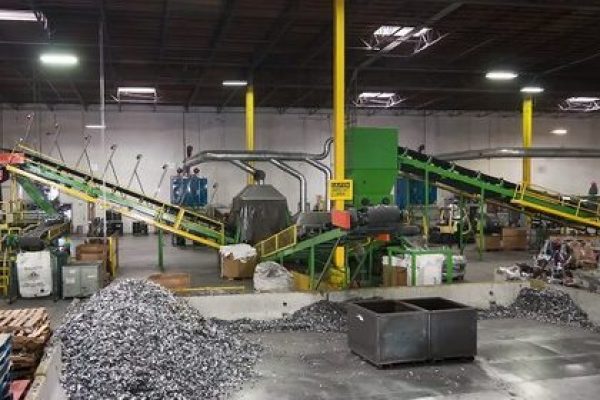Project Report For E-Waste Recycling Plant
Introduction
Project Report For E-Waste Recycling Plant is as Follows.
A specialised facility intended to treat electronic garbage, often known as e-waste, is an e-waste recycling plant. Computers, cellphones, TVs, printers, and other electronic gadgets that have reached the end of their useful life or are no longer working are examples of e-waste. These gadgets include precious materials as well as hazardous compounds that must be appropriately controlled.
An e-waste recycling plant’s principal purpose is to recover valuable materials from electronic devices while minimising the environmental effect of their disposal. The collecting and sorting of e-waste from diverse sources, such as households, companies, and electronics manufacturers, is often the first step in the recycling process. The e-waste that has been gathered is subsequently delivered to a recycling facility.
When e-waste arrives at the factory, it goes through a number of mechanical and human sorting procedures. Disassembling the devices allows for the separation of various components such as circuit boards, wires, plastic casings, and metals. Shredders, magnets, and eddy current separators are among the advanced technologies utilised to efficiently separate and sort the materials. After the components are separated, they are treated individually.
Circuit boards, for example, may be treated to specialised processes such as mechanical crushing and chemical leaching to extract precious metals such as gold, silver, and palladium. Typically, plastics are shredded, cleaned, and processed into plastic pellets for reuse in manufacturing.
Metals like copper, aluminium, and steel are collected and transferred to smelters or refineries for additional processing and purification. These metals may be reused in a variety of sectors, minimising the requirement for virgin resources and the environmental impact associated with them. Hazardous compounds are handled properly during the e-waste recycling process.
To avoid their discharge into the environment, hazardous chemicals such as lead, mercury, cadmium, and brominated flame retardants are removed and handled separately. To safely neutralise or recover these hazardous compounds, specialised procedures such as chemical treatments and heat processes are utilised.

Types Of E-Waste Recycling Plant
Shredder Facilities: Shredder facilities process bigger electrical items like refrigerators, washing machines, and other appliances. These facilities employ strong shredders to shred the bulky e-waste into tiny bits, making the subsequent separation and sorting operations easier.
PCB Recycling Facilities: PCB recycling facilities specialise in recovering valuable materials from printed circuit boards, which are present in a variety of electronic gadgets. Mechanical crushing, chemical leaching, and specialised separation procedures are used in these operations to remove precious metals such as gold, silver, and palladium from circuit boards.
Cathode Ray Tube (CRT) Recycling Plants: CRT recycling plants are particularly built to manage hazardous compounds such as lead found in cathode ray tube televisions and computer displays. These factories use methods like as mechanical crushing and separation to recover valuable materials such as glass, plastics, and metals while also managing hazardous components.
Plastic Recycling Facilities: Plastic recycling facilities collect and process plastics from electronic trash. These factories use cutting-edge sorting and separation technology to separate various types of polymers depending on their composition and properties. After that, the plastics are cleaned, shredded, and processed into plastic pellets for reuse in a variety of manufacturing uses.
Market Potential Of E-Waste Recycling Plant
The global e-waste recycling market was valued at $49,880 million in 2020 and is predicted to reach $143,870 million by 2028, growing at a 14.3% CAGR between 2021 and 2028.
Due to a mix of environmental and economic concerns, electronic waste recycling has grown more essential in recent years. The continuously rising volume of electronic trash created globally is one of the driving drivers of the Electronic trash Recycling Market. The volume of electronic trash is predicted to expand in the future years due to the expansion of electronic devices such as smartphones, computers, tablets, and other electronic gadgets.
According to the increasing acceptance of electronic waste recycling in different industries, the market for electronic waste recycling is expected to rise significantly over the forecast period. The e-waste recycling sector is quickly developing as the need for upgraded technologies and crucial equipment develops. The phenomenal growth and popularity of household electronics, ranging from laptops to smartphones to flat-screen televisions, has quickly converted this field into a multibillion-dollar global business.
Project Report Sample On E-Waste Recycling Plant
Need Help?
Create 100% Bankable Project Report

